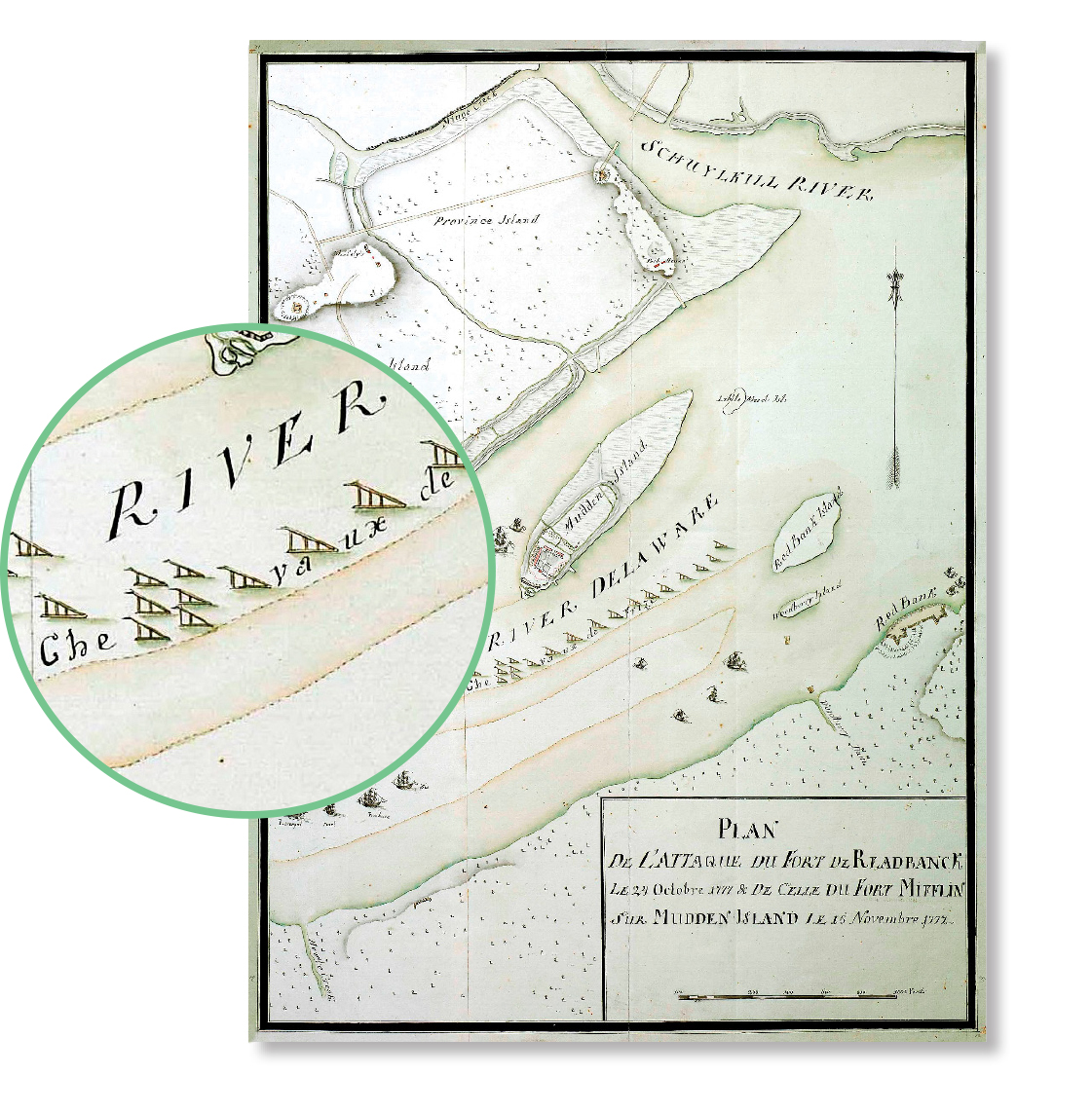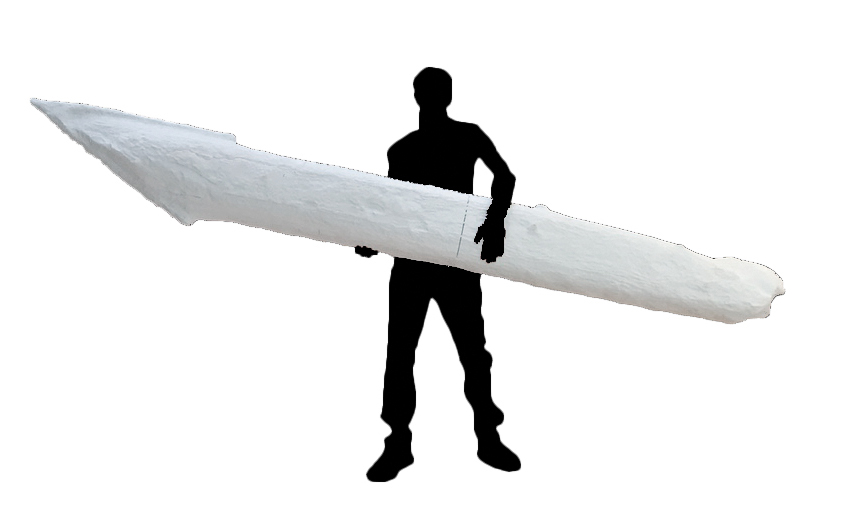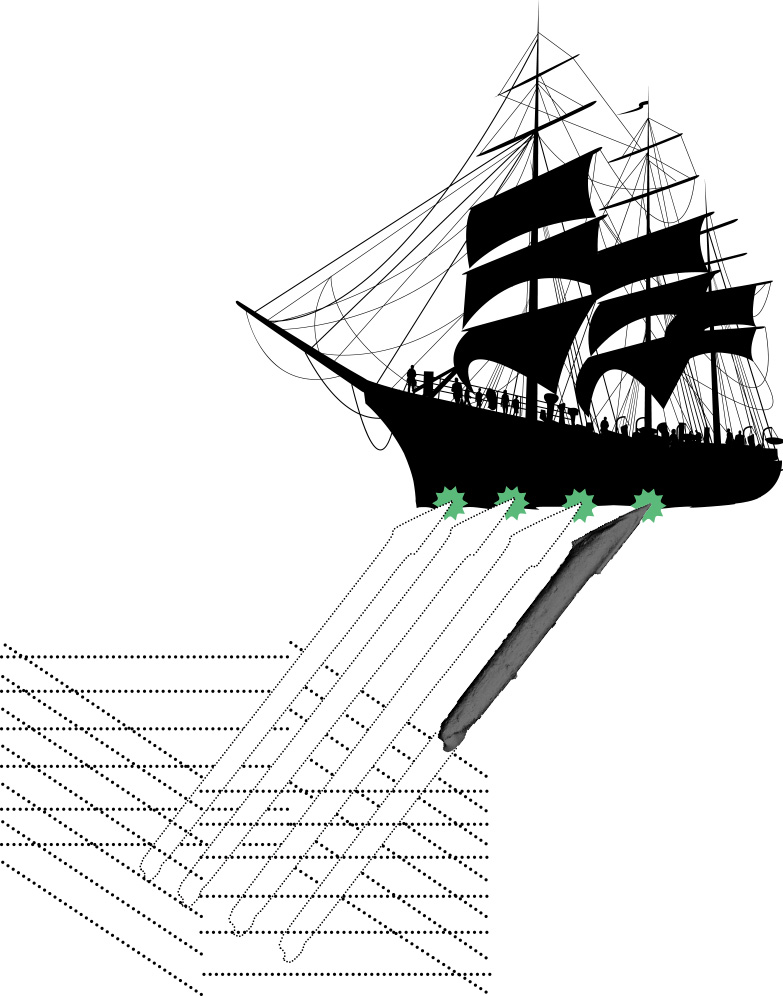
_Glen Muschio
Muschio is an associate professor of digital media in the Westphal College of Media Arts & Design.
This massive, iron-tipped spear was affixed to the bottom of the Delaware River during the Revolutionary War to thwart British ships intending to invade Philadelphia. More than two centuries later, the giant spike — which was pulled from the murky depths of the river about eight years ago — is being recreated in the Hybrid Making Lab in Drexel’s Westphal College.
STYRO_SPEAR
Students and faculty produced a life-size foam replica of the cheval using a Computer Numerical Control router tool.
SUNKEN_TREACHERY
According to war historians, several of these weapons — known as chevaux de frise — would be attached to boxes affixed to the river bottom. Along the Delaware River near Philadelphia, artillery fire rained down on ships from forts on both sides of the river, forcing British boats directly into the path of the submerged spikes.
Using a 3-D scan of the cheval-de-frise made by digital media sophomore Mark Petrovich in 2007 and a tool that creates objects by rapidly carving a block of foam, Hybrid Making Lab Director Erik Sundquist and digital media junior Riley Stewart are producing a life-size replica of the weapon to serve as a stand-in as the Philadelphia’s Independence Seaport Museum prepares the genuine artifact for public exhibition.
Weapons like this were originally developed in Europe as land obstacles to prevent cavalry charges. But during the American Revolutionary War colonial forces modified the design of the weapon for maritime defenses in the Delaware and Hudson rivers.
As part of Drexel’s digital cultural heritage work, led by Associate Professor Glen Muschio, the cheval is being recreated to allow the Seaport Museum to build a brace for displaying the actual cheval.

DELAWARE_DEFENSE
This Revolutionary-era map shows the positions of the chevaux de frise in the Delaware River near the New Jersey side. The spear-like weapons, combined with land-based artillery, were an effective deterrent for British ships.

HULL_PIERCER
Measuring 11.5 feet and weighing approximately 250 pounds, the weapon has a width roughly equivalent to a telephone pole with a sharp metal tip capable of puncturing the hull of a boat


